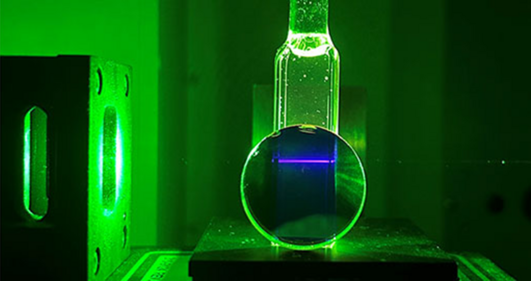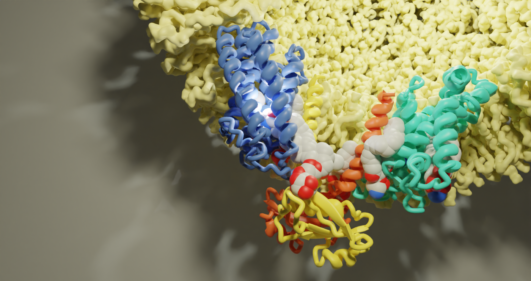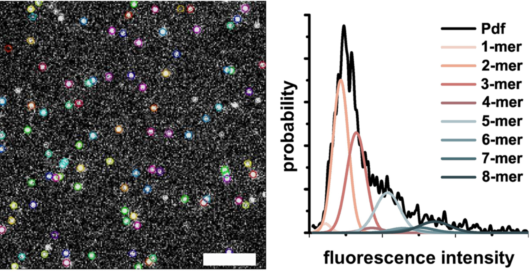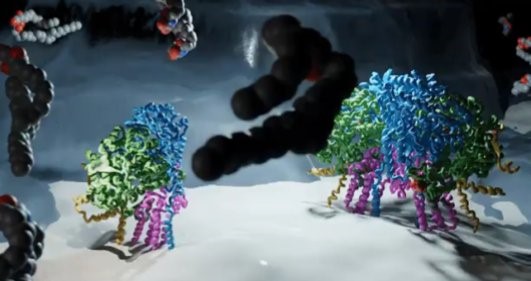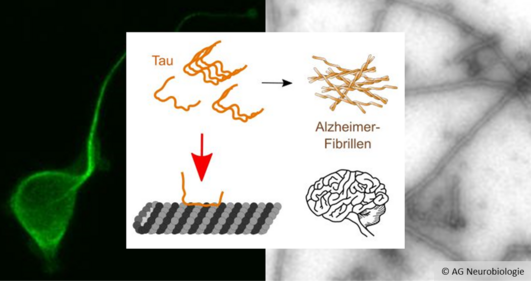Weiterführende Informationen
Top content
Light energy conversion made by cheap and abundant iron
As an important approach for solar energy conversion, photocatalysis allows the use of light energy to drive chemical reactions. However, current photocatalysts rely heavily on expensive nobel transition metals like ruthenium or iridium, and their low natural abundance is seen critical for sustainable solar energy conversion. The junior research group led by Wang used a photosensitizer based on cheap and earth-abundant iron to convert low-energy green light to high-energy blue light and to catalyze polymerization reactions. The work has been published in Journal of the American Chemical Society:
Luminescent Fe(III) Complex Sensitizes Aerobic Photon Upconversion and Initiates Photocatalytic Radical Polymerization
Pengyue Jin, Xinhuan Xu, Yongli Yan, Heinrich Hammecke & Cui Wang
December 2024
How to make ceramides: Structural insights into the function of yeast ceramide synthase
Ceramides are an essential class of lipids found in all eukaryotic cells, playing a crucial role in maintaining the structure of the plasma membrane. Researchers from the Möller and Fröhlich labs have resolved the structure of the enzyme responsible for ceramide synthesis in yeast: the ceramide synthase. These structures now allow predictions about the active center of the enzyme and the reaction mechanism leading to the formation of ceramides from a sphingoid base and a fatty acid. This work is now published in Nature Structural & Molecular Biology:
Structure of the yeast ceramide synthase
Jan-Hannes Schäfer, Lena Clausmeyer, Carolin Körner, Bianca Esch, Verena Wolf, Jennifer Sapia, Yara Ahmed, Stefan Walter, Stefano Vanni, Dovile Januliene, Arne Moeller & Florian Fröhlich
November 2024
When cells sacrifice themselves: New insights into molecular processes in programmed cell death
When cells are infected with pathogens, they can initiate their own demise, triggering a strong immune response. In this process known as ‘pyroptosis’, formation of pores in the plasma membrane is a decisive step. Using quantitative single molecule imaging techniques, researchers of the CellNanOs led by Katia Cosentino have now uncovered that distinct palmitoylation of the protein Gasdermin-D critically regulates its oligomerization into pores. Their findings have been published in ‘The EMBO Journal’:
Gasdermin D cysteine residues synergistically control its palmitoylation-mediated membrane targeting and assembly
Eleonora Margheritis, Shirin Kappelhoff, John Danial, Nadine Gehle, Wladislaw Kohl, Rainer Kurre, Ayelén González Montoro, and Katia Cosentino
August 2024
Decoding sphingolipid regulation: Structural insights into the function of Orm proteins
Sphingolipids are one of the three major lipid classes in all eukaryotic cells, playing a critical role in the organization of the plasma membrane. Their levels are tightly regulated. Researchers from the Fröhlich and the Möller labs have solved the structure of the yeast serine palmitoyltransferase – the rate-limiting enzyme in sphingolipid biosynthesis – in complex with the negative regulator Orm2 and the small subunit Tsc3, and uncovered differential inhibition by Orm1 and Orm2. This study has been published in Cell Reports:
The structure of the Orm2-containing serine palmitoyltransferase complex reveals distinct inhibitory potentials of yeast Orm proteins
Carolin Körner, Jan-Hannes Schäfer, Bianca M. Esch, Kristian Parey, Stefan Walter, David Teis, Dovile Januliene, Oliver Schmidt, Arne Moeller & Florian Fröhlich.
August 2024
Resolving fast dynamics at the plasma membrane: New microscope opens up exciting possibilities
Researchers of the iBiOs Facility at the CellNanOs developed a new microscope combining quantitative single-molecule imaging (SMI) with structured illumination microscopy (SIM). Ultra-homogenous flat-field fluorescence excitation was achieved by a unique combination of laser beam shaping and multi-angular oblique illumination, enabling long-term quantitative SMI and combination with super-resolution imaging of cellular nanostructures by SIM. The work has been published in "Nature Communications":
Correlative single-molecule and structured illumination microscopy of fast dynamics at the plasma membrane
Hauke Winkelmann, Christian P. Richter, Jasper Eising, Jacob Piehler & Rainer Kurre
15 Aug 2024
What helps in the fight against Alzheimer's? New method allows drug screening in living cells
Alzheimer's disease affects millions of people worldwide - and the numbers are rising. The interest in researching effective drugs is correspondingly high. A team led by Osnabrück biologist Prof. Dr. Roland Brandt (RG Neurobiology) has now developed a method that makes it possible to identify promising substances in living cells. The work has been published in the prestigious scientific journal "Nature Communications".
27 Feb 2024
Nanomaterials meet membrane biology: Interdisciplinary research training group granted
Great success for CellNanOs researchers: the German Research Foundation (DFG) will fund the research training group "nanomaterials@biomembranes" with 6.9 million euros starting in October 2023. The initiative supports PhD projects at the interfaces of nanomaterials synthesis, chemical surface functionalization, and membrane biochemistry and biophysics - and offers "outstanding opportunities to qualify for interdisciplinary research fields that are currently emerging between biology, chemistry, and physics," says the consortium's designated spokesperson, Prof. Dr. Jacob Piehler.
8 May 2023
Replenishing fluorophores during imaging
Scientists of the iBiOs facility have engineered novel “reHaloTag” variants that allow reversible labeling of proteins in live cells. In combination with fluorogenic substrates, substantially prolonged live-cell high- and super-resolution microscopy has been achieved. Application in single molecule tracking and localization microscopy and combination with SIM was particularly impressive. The work has been recently published as a “hot paper” in “Angewandte Chemie” and will be highlighted on the front cover.
Reversible Live-Cell Labeling with Retro-engineered HaloTags Enables Long-Term High- and Super-Resolution Imaging
Holtmannspötter M, Wienbeuker E, Dellmann T, Watrinet I, Garcia-Sáez A J, Johnsson K, Kurre R, Piehler J
20 Mar 2023
New Collaborative Research Centre
The University of Osnabrück is receiving more than 11.5 million euros from the German Research Foundation (DFG) for the new Collaborative Research Centre 1557 "Functional plasticity encoded by cellular membrane networks". The DFG is thus funding the joint research of numerous young scientists around the biochemist Prof. Dr. Christian Ungermann (4th from right). "A tremendous success and great recognition," say University President Prof. Dr. Susanne Menzel-Riedl and Science Minister Falko Mohrs.
EWK grants funding of NFDI4BIOIMAGE
The Joint Scientific Council (GWK) of federal and state governments has approved funding of several national research data infrastructure (NFDI) initiatives including the NFDI4BIOIMAGE. Headed by Dr. Susanne Kunis, the iBiOs Facility at CellNanOs was founding member of this initiative, which will focus on developing a framework to promote sharing and exploiting image data across disciplines in life sciences. Scientists from ten research institutions are involved in the consortium, which is coordinated by the University of Düsseldorf (HHU) and DKFZ Heidelberg. A total funding of 11.6 million € was granted for the work of the entire consortium over a period of five years. At Osnabrück University, the team of Dr. Kunis will address the definition of common mechanisms and standards, starting from a consolidated approach to a common data format and techniques for metadata formulation.
4 Nov 2022
Spatially controlled signaling nanodroplets
Close interdisciplinary collaboration of the You group with the groups of Steinhart, Piehler and Holthuis at the CellNanOs Research Center established biofunctional nanodot arrays in live cells. They demonstrate unique quantitative analysis of interactions and phase separation at nanoscale Wnt signaling platforms. The work has been published in the renowned interdisciplinary journal "Small" and has been featured on the front cover.
Biofunctional nanodot arrays in living cells uncover synergistic co-condensation of Wnt signalodroplets
Philippi M, Richter CP, Kappen M, Watrinet I, Miao Y, Runge M, Jorde L, Korneev S, Holtmannspötter M, Kurre R, Holthuis JCM, Garcia KC, Plückthun A, Steinhart M*, Piehler J*, You C*
20 Oct 2022
First structure from "Elenor" published in eLife
After years of tedious work, the Ungermann and the Möller labs together solved the structure of the multiprotein HOPS complex, uncovering key mechanistic features of endosomal vesicle tethering and fusion. The work has been published in eLife and featured as a landmark paper in the field.
Structure of the HOPS tethering complex, a lysosomal membrane fusion machinery
Shvarev D**, Schoppe J**, König C**, Perz A, Füllbrunn N, Kiontke S, Langemeyer L, Januliene D, Schnelle K, Kümmel D, Fröhlich F, Moeller A*, Ungermann C*
13 Sep 2022
Keeping the heart in the right rhythm
How does the heart stay in rhythm? This question was the focus of an investigation by a team led by Dr. Heiko Harten from the Zoology group. The researchers discovered that the enzyme "neprilysin 4" plays a decisive, yet hitherto completely unknown role in this process. The results have been published in the journal Nature Communications.
Neprilysins regulate muscle contraction and heart function via cleavage of SERCA-inhibitory micropeptides
Schiemann R, Buhr A, Cordes E, Walter S, Heinisch JJ, Ferrero P, Milting H, Paululat A, Meyer H
22 Aug 2022

First CellNanOs Open House for Osnabrück University
On June 14th in the afternoon, the CellNanOs opened its doors to all members of the University. After a keynote lecture by Arne Möller on structural biology by cryo-electron microscopy, the CellNanOs staff offered ample opportunities to explore the cellular nano-world via lab demonstrations, virtual reality events and 3D-printed nanostructures. In addition, young researchers presented interdisciplinary projects at CellNanOs and in the Student lab, students could meet with advanced master and PhD students.
14 Jun 2022
New publication on the cover of Cell Reports Methods
In this current issue of Cell Reports Methods we are featured with our article on the cover
Four-color single-molecule imaging with engineered tags resolves the molecular architecture of signaling complexes in the plasma membrane
Bellón JS, Birkholz O, Richter CP, Eull F, Kenneweg H, Wilmes S, Rothbauer U, You C, Walter MR, Kurre R, Piehler J.
7 Mar 2022
New high-end transmission electron microscope for structural biology
3 million euros for cutting-edge research at the University of Osnabrück
14 Apr 2021
Publication in eLife
Nanoscopic anatomy of dynamic multi-protein complexes at membranes resolved by graphene-induced energy transfer
Füllbrunn N, Li Z, Jorde L, Richter CP, Kurre R, Langemeyer L, Yu C, Meyer C, Enderlein J, Ungermann C, Piehler J, You C
29 Jan 2021
Behind the Scenes - Research Excellence in Lower Saxony
As part of the series "Research Excellence in Lower Saxony", Prof. Sabine Zachgo and Dr. Michael Holtmannspötter present their recent work on superresolution imaging of transcriptional regulation in cell nuclei of plant roots.
17 Jul 2020

